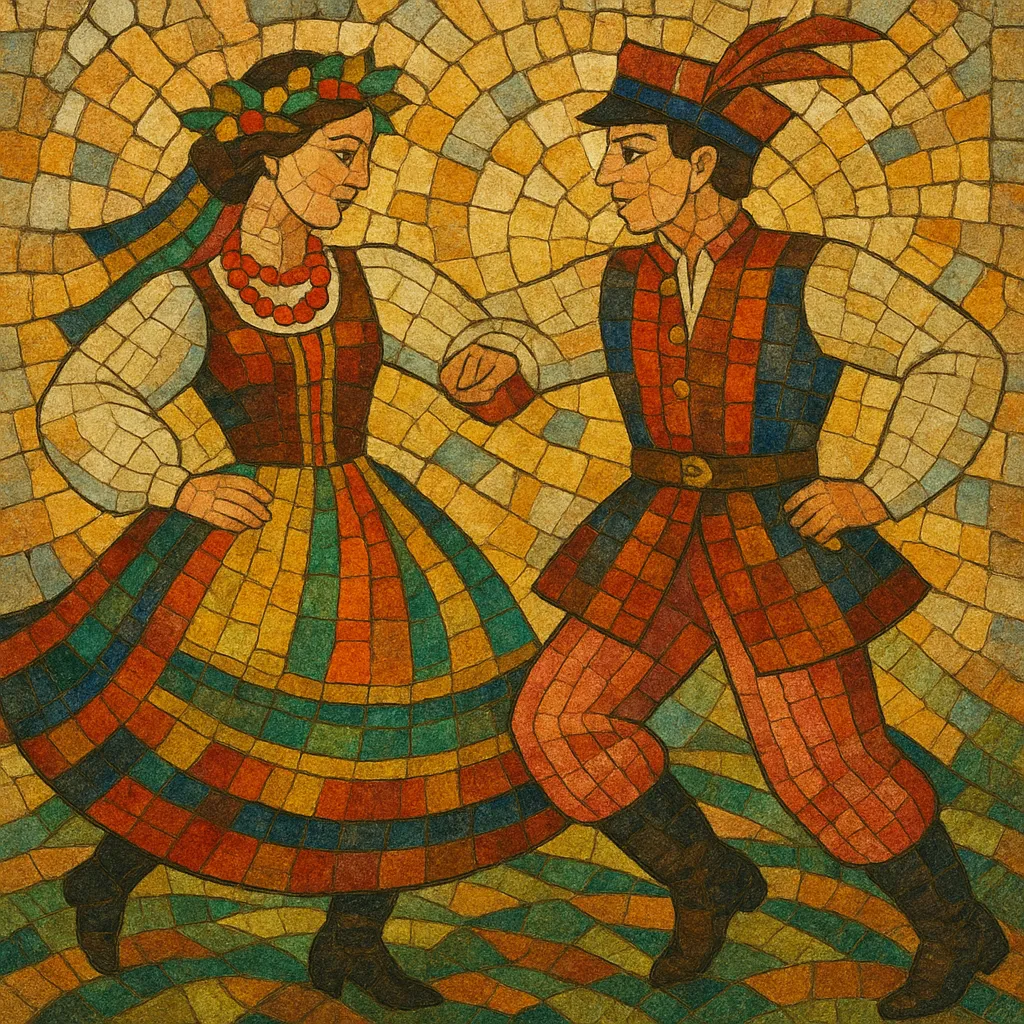
Krakowiak (French: Cracovienne) is a lively Polish dance and musical genre from the Kraków region, set in a brisk duple meter (2/4) with characteristic off‑beat accents and syncopations.
It is typically performed at an energetic Allegro tempo, with short two- or four-bar phrases grouped into balanced 8–16 bar periods, often in a repeated binary (AABB) structure.
The music favors bright major keys with occasional Lydian inflections (raised 4th scale degree) found in Polish folk melodies. Accompaniments stress the up-beat, giving the dance its propulsive, strutting character.
In the 19th century it became a popular ballroom dance across Europe and a stylized “national” dance in Polish stage works and concert music.
The krakowiak grew out of village and small-town traditions around Kraków in southern Poland. By the late 18th century it had a recognizable musical-dance profile: duple meter, syncopated accompaniment with accents on weak beats, and brisk, processional movement. Its earliest urban codifications coincided with Poland’s partitions, when local dances became emblems of identity.
In 1794, the wildly popular Warsaw stage work “Cud mniemany, czyli Krakowiacy i Górale” (The Supposed Miracle, or The Cracovians and the Highlanders; music by Jan Stefani, libretto by Wojciech Bogusławski) showcased krakowiak rhythms and dance steps, accelerating the genre’s spread beyond its regional roots. Soon it entered salons and ballrooms, often under the French name “Cracovienne.”
Composers began to stylize the krakowiak for piano and orchestra. Fryderyk Chopin’s Rondo à la krakowiak in F major, Op. 14 (1828) is a landmark, translating folk syncopations into virtuosic concert idioms. Throughout the century, Polish stage composers (e.g., Kurpiński, Moniuszko) and foreign composers writing “national color” numbers incorporated krakowiak episodes into operas, ballets, and character pieces, cementing a recognizable rhythmic fingerprint.
Professional folk ensembles (e.g., Mazowsze, Śląsk) standardized choreographies and costuming, preserving regional variants while adapting them for concert stages and international tours. Today, the krakowiak remains a staple of Polish folk performance, community celebrations, and educational repertoire, and it survives in the classical canon via stylized piano works, orchestral dances, and operatic numbers.

